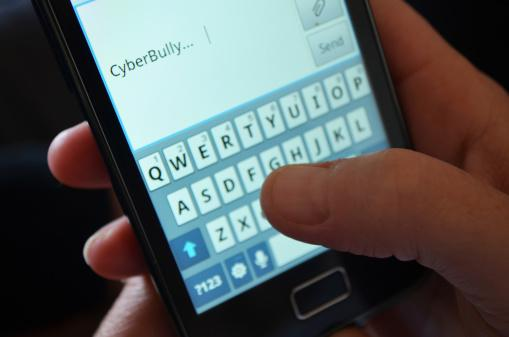Bullies have been around for decades. Back when I was attending school it was known as “teasing”. But there was a huge difference between what went on back in the day and what is happening to children today.
I can remember being teased as far back as the first grade. The teasing was minimal but for a sensitive child, it still hurt. The snide remarks latest until my early teens and then somehow went away. Being different back in the 1960’s and 70’s meant a little teasing from the tougher kids who happened to be dealing with their own personal insecurities. This was long before the computer and android phones cam on the scene. This was before social networks and teenagers posing for selfies, posting countless pictures of themselves on various social sites.
Enter the new millenium, fast forward 18 years and the teenage years have changed drastically. There’s more pressure to look better than their classmates sitting next to them in English Lit Class. There’s also more emphasis on how a person looks and what type of socio economic background they come from. What used to be the typical insecure overweight bully spotting your one weakness or picking at one minor fault (according to the pimple faced prepubescent teen); has now escalated into something known as cyber bullying.
There’s been a plethora of technological advances that have helped the growing needs of society as whole. As the 1980’s rolled in, so did the computer and mobile phones followed shortly after that. No one could foresee what what happen as these new cutting edge technological advances were introduced to society.
Computers became part of the school curriculum and eventually adults weren’t the only individuals who were able to take advantage of having a mobile phone. Today most children have their own cell phones before they become teenagers. With these amazing new advances also came a new type of bullying…cyber bullying. Today it’s easier than ever for problematic bullies to zero in on a weaker peer; bringing cyber bullying to extreme levels.
Parent Tip: How to use Google to lookup phone numbers.
Extreme Levels of Bullying -What parents are deeply concerned over Texting (a form of cyber bullying)
Parents are becoming alarmed with how easy it is for a bully to simply punch in some letters into a mobile phone or other types of devices. The rates have staggered as 90 percent of the teen population operate a mobile phone. Sadly; one fifth of these teenagers will become victims of bullying by way of texting. One tenth of the teen population has become a cyber bully. Lastly;
Texting Bullying: Defined as sending messages to others with the intent of being hurtful, mean, giving any false statement, or send character defaming messages. Texting can take place using a cell phone or by using social apps.
Cyber Bullying VS Traditional Traditional Bullying
Bullying used to occur more often than not during school hours. Before computers were born or teenagers faces were buried in their phone, a bully had limited places or opportunities to pick on someone else. This meant that the victim could return home to a safe place and hopefully have a calming down time from the harassment at school.
Today’s bullies have entered the world of cyberbullying, where texting from computers and phones can occur at any hour of the way. Texting the victim has become more common due to the fact that the bully doesn’t have to show his face. Not so clever bullies try to get away with sending anonymous hate texts. Any phone number can be traced, and if caught there will be criminal charges against the person who sent the text.
Cyber bullying can follow a person for the rest of their lives. While texts can be erased, often they’ve been passed around to more people than one realizes, causing lasting and damaging effects.
The Centers for Disease Control and Prevention (CDC) reports that bullying affects 20% of high school students and cyberbullying affects 16% of high school students. Surveys also show that 33% of students ages 12-18 who reported bullying at school and 27% of students ages 12-18 who reported cyberbullying suggested that they were bullied at least once or twice a month. The highest rate of bullying (25%) occurs on the Middle School level, at least once a week. For more information on cyberbullying and how to prevent it check out this guide moneysavingpro have created.
Bullying today has gone beyond the traditional forms of bullying that occured up until the late 1980’s. Todays bullying has both negative short and long-term consequences for both victim and the bully. traditional intervention methods involved getting help for the victim only. Today both the victim and the bully involved can benefit from psychosocial support.
Damaging effects of text bullying include:
- Anxiety
- Withdrawing socially
- Depression
- Violent reactions
- Suicide
- Difficulty with sleeping at night
- Feelings of embarrassment and shame
- Change in diet-either not eating or overeating
- Lack of self-esteem
- Wetting the bed
- Missing school
- Poor grades
- Psychosomatic symptoms can occur such as; sudden headaches, stomach aches, or other physical complaints
- Weakened immune system
Do you Suspect Your child is Being Text Bullied?
Here are some signs your child is being bullied…
- Look for bruises, cuts, or scratches that aren’t from normal teenager activities. Did you know that research from various American studies reveal that one-tenth of bullied students admit being shoved, forcefully handled, spit on, tripped or pushed down by another student. This type of physical abuse leaves more than the normal bumps and bruises.
- A change in appetite: Most teenagers have a healthy appetite. If you notice your teen isn’t eating, it could be due to stress, or…perhaps the bully picking on him/her is taking their lunch.
- Low school attendance: If your child went from attending school on a regular basis to all of the sudden not wanting to attend school on the regular; this could be a sign something is happening at school and should be looked into.
- Grades have gone down
- Your child’s behavior doesn’t seem the same, perhaps you notice isolation and/or depression.
- Sleeping difficulties are often a result of your child being picked on at school.
- If you’re child seems to be complaining about not feeling well more than usual; this could be psychosomatic due to being bullied.



